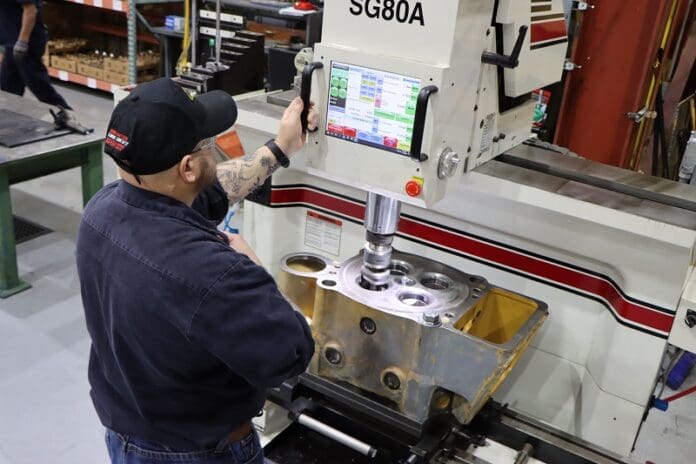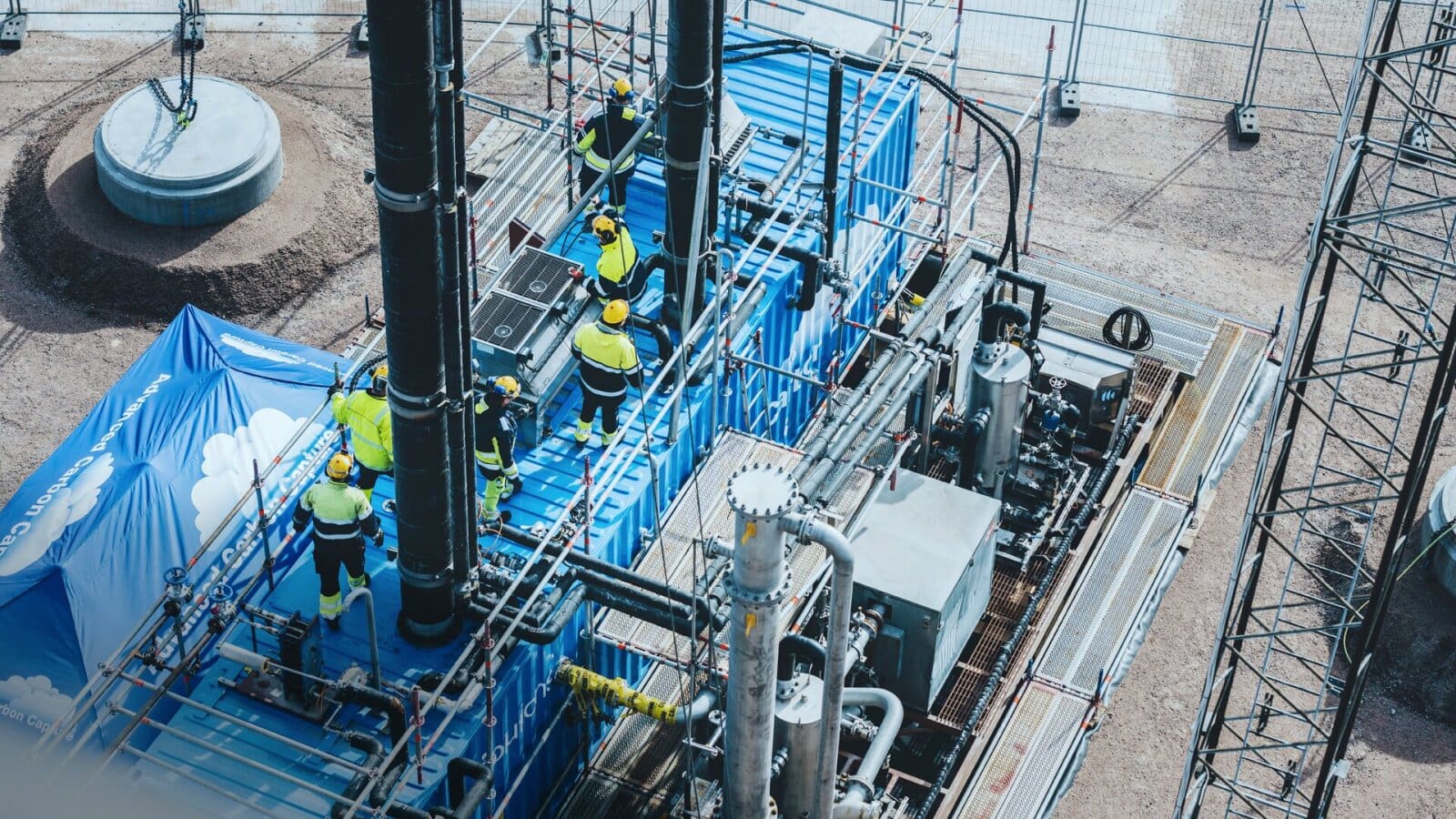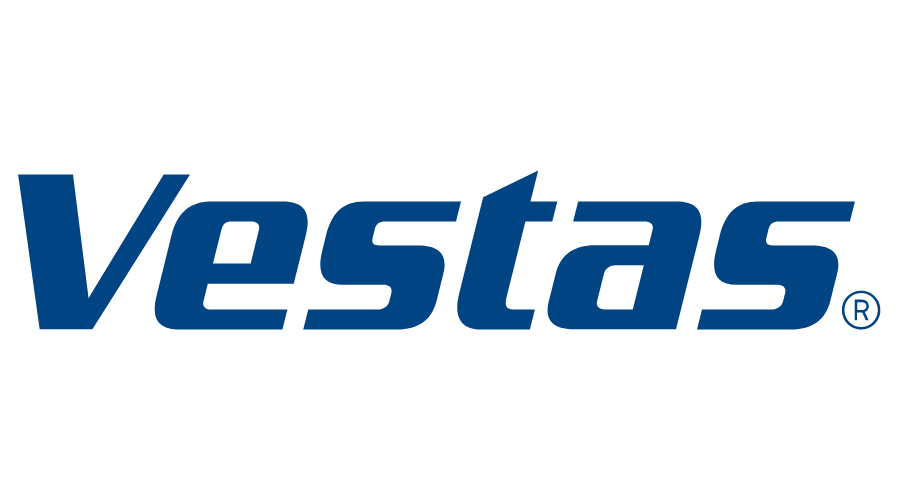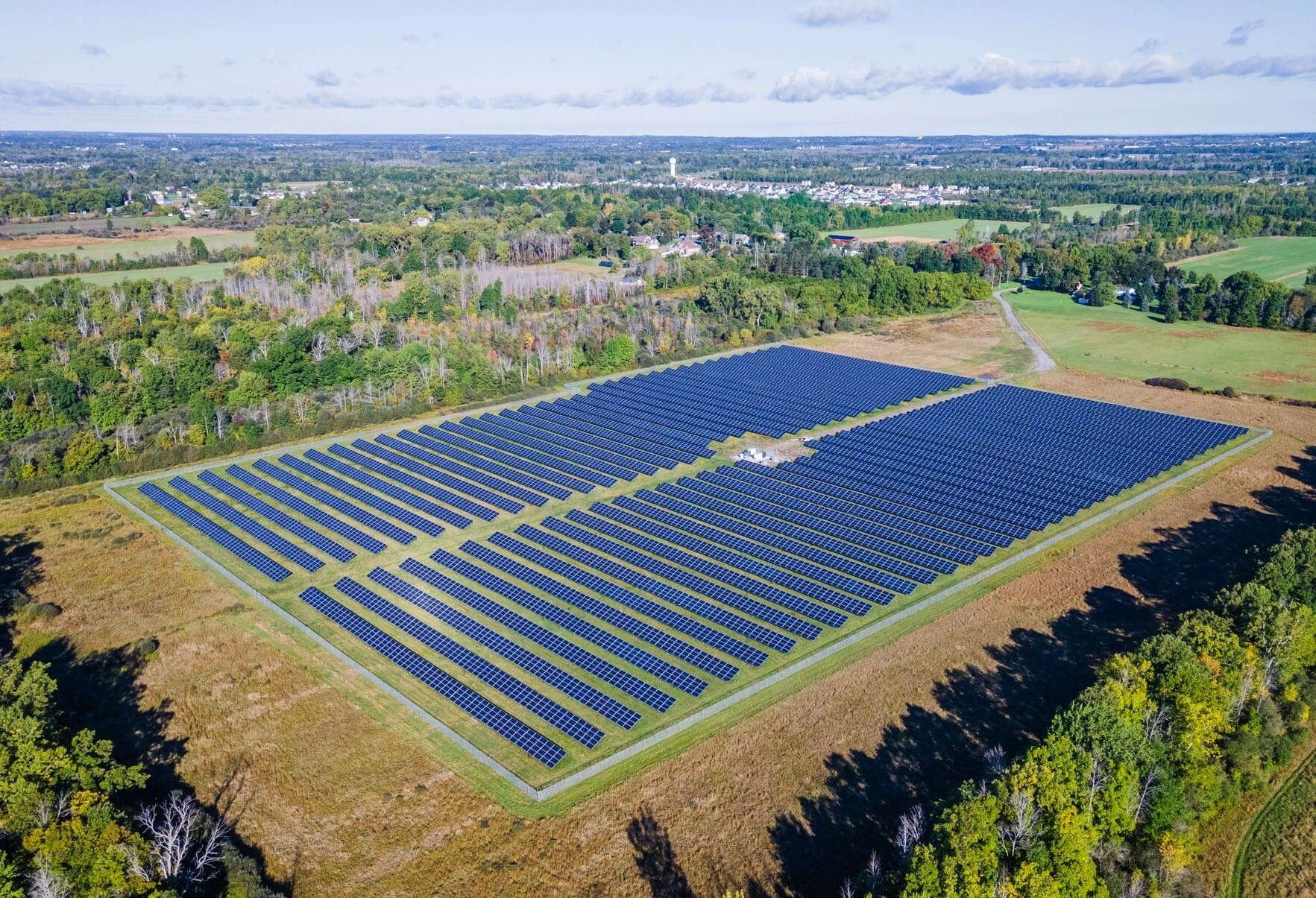Scott Buckhout has been named president and CEO of Cooper Machinery Services (Cooper). He takes the reins of the Houston-based provider of natural gas engines, compressors, and aftersales products and services four years after BHGE sold its Reciprocating Compressor Division to Arcline Investment Management, returning Cooper to independent operation. Since 2019, the company has made myriad investments that have expanded its product and service offerings and streamlined operations.
Buckhout has more than 20 years of senior leadership with global industrial/energy original equipment manufacturers (OEMs). Most recently, he was the CEO of CIRCOR International Inc. Prior to that, he led the Fire and Security Division of United Technologies Corp. Buckhout has an aerospace engineering degree from Texas A&M University and an MBA from J.L. Kellogg Graduate School of Management at Northwestern University.
ESG Review spoke with Buckhout about the challenges and opportunities facing the industry today and what lies ahead for Cooper.
In your opinion, what are the biggest challenges facing the gas compression industry today? What is Cooper doing to meet these challenges?
As we look across the industry, we see three primary near- and long-term challenges: supply chain volatility and inflation, potential emissions regulations, and an aging workforce.
The most immediate challenge we have is the post-COVID-19-related volatility and inflation in our supply chains. While demand for natural gas exports, including US liquefied natural gas [LNG], is reaching an all-time high, major bottlenecks and elevated costs still exist in critical supply chains, especially for new equipment. Operators attempting to add new horsepower are confronted with long lead times and higher prices. Cooper has avoided the worst of the supply chain delivery issues as we have actively increased our parts inventory so operators can maintain their equipment and return ‘retired’ horsepower to service faster than they could replace it with new. Cost inflation, however, continues to be a difficult issue to overcome.
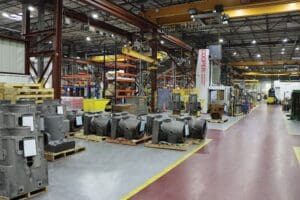
Another immediate challenge is uncertainty among our customers regarding potential emissions regulations, like the US Environmental Protection Agency’s [EPA’s] proposed Good Neighbor rule. The emissions reductions required by this proposed rule could have major implications for Cooper equipment operators and is causing delays in equipment investment decisions. Cooper, however, is ready if and when the rule is implemented. Thanks to our research and development efforts and investments, all engine models Cooper supports, both OEM and non-OEM, can achieve 0.5g NOx per bhp. We’re also actively expanding our field service capabilities to efficiently install emissions reductions equipment on a large scale if the rule passes.
The biggest long-term challenge we see is our industry’s aging workforce. Over the next few years, many of our most talented people will be retiring and taking decades of knowledge with them. Our industry is key to the energy security of the United States and other countries, so it is essential that operators have the skills and knowledge necessary to perform their work safely and reliably. To help ensure this, Cooper launched the Mazerole Training Center in 2022. The center provides theoretical and hands-on training programs to new industry talent as well as existing professionals who need to hone their skills. Most of our classes sell out, which is great to see — operators are clearly taking this challenge seriously and we’re enjoying working with them to tackle it. Cooper also has a robust engineering internship program that keeps the pipeline of talent ever flowing through our hallways and field job sites.
Market strength varies by location. In your opinion, which geographic locations hold the most promise for the gas compression industry? Why?
We see several geographic areas that hold promise. The conflict in Ukraine has changed the way Europe looks at energy security, so we will see them implement new energy projects both locally and internationally to enhance that security. In Asia, China and India continue to grow their economies, and they will be powered by increases in natural gas. LNG is reshaping how gas moves, and we are seeing projects developing LNG capabilities in the United States as well as the Middle East and northwestern African region. In fact, LNG could surpass pipeline gas quantities within 15 years, so we expect that other gas producing countries around the world will enter that market.
What market indicators do you follow/track to forecast the short- and long-term health of the gas compression industry?
Keeping track of what is happening in each market Cooper serves can be a challenge. The worldwide gas, process, and power generation markets are really a series of sub-markets with different drivers. The growth in hydrogen and LNG may simplify this by creating a more homogeneous global market, although that remains to be seen.
We track common indicators such as volume produced, volume consumed, and gas price. We keep an eye on geopolitical situations around the world, as conflict can change a market, like we’ve seen with the conflict in the Ukraine. For the massive installed base of engines and compressors Cooper supports, we keep a close eye on environmental regulations and changes that may create significant demand for emissions reductions technologies and equipment upgrades; we intend to be ready and able to meet that need.
In addition, Cooper always stays close to our customers to understand how all these factors influence their business needs. Customers are impacted differently by these changes, so we remain flexible and open when helping each of our customers navigate the markets.
Cooper has invested heavily in developing new products and services to optimize legacy assets, extend equipment life, and ensure environmental compliance. In your opinion, what opportunities do ESG mandates and requirements present for the gas compression industry?
ESG mandates allow everyone in the industry to think critically about how their company’s practices affect the world socially and environmentally. These efforts create new programs and processes that can be transformational. Cooper sees this as an opportunity to help customers meet their ESG goals by offering innovations on products and technologies that will enhance their equipment performance and reliability.
What challenges does ESG present?
One of the more difficult hurdles we encounter is a mindset that ‘new’ is better than ‘enhanced, existing’ equipment. It is hard for some of our clients to recognize that the application of upgrades and technology to the existing installed equipment is cheaper and better because it extends the useful life, meets or exceeds emissions standards, and does this with lower capital and operating costs.
As a company, what environmental initiatives has Cooper undertaken?
Cooper is reducing its environmental impact in several ways. First, our CleanBurn Plus technology, which we began developing in the mid-1970s with our traditional CleanBurn technologies, reduces emissions on the legacy engine models we support — such as AJAX, Clark, Cooper-Bessemer, Enterprise, IR, Superior, and Worthington — to comply with or achieve better-than-new source performance standards [NSPS] and various state standards. It reduces total hydrocarbons, including methane, and reduces fuel consumption up to 20% by improving combustion efficiency. We’ve also developed other products to improve compressor efficiency by improving gas throughput and reducing overall fuel consumption. The new CleanBurn Plus differs from our traditional CleanBurn technologies in that our upgrades are electronics-based and eliminate the need, in most cases, to replace hard-iron products like cylinders lines and cylinders, power heads, and power pistons. This brings the cost of upgrades down substantially for legacy gas engines.
Second, we’re making improvements in our manufacturing facilities. Our new power cylinder hard-iron plating initiative will eliminate more than 2 tons [1.8 tonnes] of chrome, a pollution risk, from our manufacturing process annually and will provide customers a high-quality OEM alternative to purchasing new power cylinders. Our new Mo2 power ring cell also produces chrome-free power rings. Finally, our ability to overhaul and upgrade engines and compressors to zero-hour conditions provides tremendous benefits by allowing customers to maintain existing equipment instead of buying new engines and compressors.
Cooper is actively investing in hydrogen development. How do Cooper’s engines and compressors fit into the hydrogen economy?
The use of hydrogen is an exciting development for the compression industry, and it is expected to play a greater role in our industry over the next 10 years. Cooper has supported hydrogen compression applications for decades, and we are fully capable to support existing hydrogen compressors and produce new ones. On the engine fuel side, Cooper has demonstrated blending 30%+ hydrogen by volume with natural gas on AJAX and Cooper-Bessemer integrals in both our in-house test lab and with several customers on their equipment. We’re also expanding our research and development programs so we can learn more about the emissions and efficiency benefits of hydrogen and ensure we can support the needs of customers who want to consider hydrogen options.
What trends have you identified throughout the gas compression value stream and what impacts do these trends have on the gas compression market?
We’ve seen, especially since the start of the conflict in the Ukraine, that countries are prioritizing their energy security and recognizing the key role that natural gas production and transport plays in that security. We’re seeing end users all over the world investing in critical compression infrastructure, and we expect that trend to continue.
In the United States, with the emergence of LNG, we see ‘retired’ compressors getting overhauled, upgraded, and put back into service to meet this new demand for natural gas deliveries to new liquification plants. Power generation customers, including government installations, have become more active as their Cooper-Bessemer and Enterprise engines now run more frequently to meet increased power demands.
All of this, along with the pent-up demand for scheduled maintenance and overhauls that occurred during COVID-19, is now providing Cooper with a tremendous opportunity for growth globally.
When Cooper ‘returned to independence’ in 2019, its goal was to ‘get back to basics.’ The company quickly made substantial investments to expand product and service offerings, streamline operations, and strengthen customer ties. How does the Cooper today compare to the Cooper of 2019?
The business shifts Cooper made in recent years positioned us well for the opportunities that appear in the market today. Through the addition of organic programs and multiple complementary acquisitions, we now offer more aftersales support technologies, products, and services than any company in the world. Cooper invested in both inventory and our people to meet new demand, adding more parts to our shelves, increasing our already large engineering staff, and adding more members to our service team. We expanded our product lines to include aftersales support for Caterpillar 3600 and Waukesha VHP engines, and we grew our international presence, creating new partnerships around the world. Our customer-focused approach and targeted strategic investments allow us to provide elite-level aftersales services moving into the future.
As its new CEO, what are your short-term plans and priorities for Cooper?
In the near term, we will focus on expanding our project management capabilities to get prepared for the upcoming large compression and power generation projects we see on the horizon. To that end, we recently won large multi-year projects with the US Department of Defense, a large utility district, and a major pipeline. We plan to leverage the successful completion of large aftermarket projects into non-traditional markets including power generation and process facilities. We are investing heavily in our manufacturing processes as well. We are currently commissioning a new plating cell in our Houston factory that plates power cylinders and pistons with environmentally friendly materials that replace chrome and tin. We also plan to bolster our ability to provide refurbished parts like engine and compressor bases, cylinder blocks, compressor bodies, and crankshafts to give customers more choices when they are planning engine-compressor overhaul and upgrade projects.
What are your long-term plans and priorities?
In the long term, we will continue our program of growth by acquiring adjacent products and technologies that capitalize on our expertise and knowledge of the market and our customer base. Cooper’s overriding goal is to be a complete and best-in-class OEM and aftersales support provider for our global customer base. That is what they deserve. I believe our plans for the future put us in a strong and strategic position to achieve that goal and keep the engines and compressors of our industry operating for the long term.



